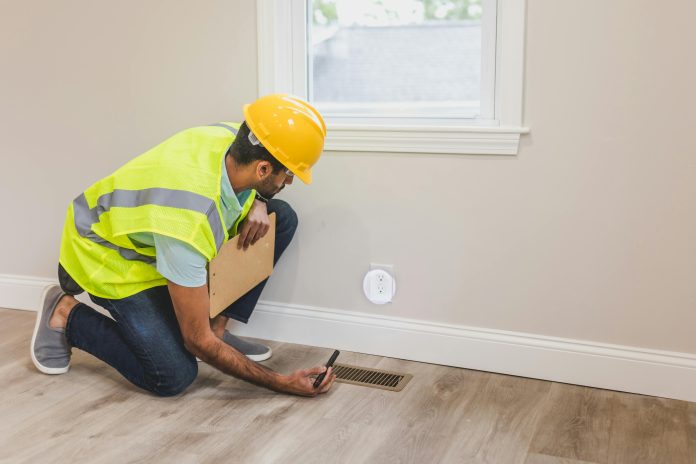A pool isn’t just a functional addition to your home; it’s an investment in your lifestyle. It’s a space where you can unwind, entertain guests, and create lifelong memories with family and friends. However, planning your dream pool isn’t as simple as digging a hole and filling it with water.
The process requires careful thought, from setting your budget to choosing the right materials and designs. With so many options available, it’s easy to feel overwhelmed. That’s why a strategic approach is essential to turn your dream into reality.
This guide walks you through ten essential tips to help you navigate the planning process, ensuring you get a pool that fits your needs, complements your home, and adds long-term value to your property. Whether you’re dreaming of a sleek infinity pool or a family-friendly retreat, these insights will help you create the perfect backyard oasis.
1. Define Your Purpose
Start by asking yourself: Why do I want a pool? Understanding the purpose of your pool will shape its design, size, and features.
- For relaxation: Opt for a smaller, serene design with features like a built-in spa or tanning ledge.
- For exercise: Consider a lap pool with a long, rectangular shape and a dedicated swim current system. Swimming is healthy and can improve mood and people report enjoying water-based exercise more than exercising on land.
- For entertainment: A larger pool with a shallow area for games, built-in seating, and nearby deck space for social gatherings might be ideal.
Clarifying your primary goal ensures that every decision aligns with your vision and maximizes your enjoyment.
2. Establish a Realistic Budget
Budgeting is one of the most critical steps in the planning process. Pools can range from affordable to extravagant, depending on materials, size, and extra features.
- Initial costs: Include excavation, construction, and installation of necessary equipment like pumps and filters.
- Ongoing costs: Plan for maintenance, cleaning supplies, heating, and possible repairs.
- Extras: Don’t forget landscaping, decking, and furniture that will complement your pool.
Create a detailed budget to avoid unpleasant surprises later. Consult with a professional swimming pool builder to get accurate estimates based on your vision.
3. Research Pool Types
Not all pools are created equal, and the material you choose will have a significant impact on durability, aesthetics, and maintenance.
- Concrete pools: These are highly durable and can be customized into virtually any shape, but they require more maintenance over time.
- Fiberglass pools: Pre-molded and easy to install, these pools are low-maintenance and offer a smooth surface that resists algae buildup.
- Vinyl pools: The most budget-friendly option, vinyl pools can be customized but may need liner replacements every 5-10 years.
Each type has pros and cons, so weigh your options carefully before making a decision.
4. Consider Location and Size
The placement and dimensions of your pool are crucial for both functionality and aesthetics.
- Backyard layout: Assess your outdoor space, considering where the pool will look best and where it can be most easily accessed.
- Sunlight and shade: Place your pool where it gets ample sunlight for warmth, but consider shading options for comfort during hot days.
- Drainage: Ensure the area has proper drainage to avoid water accumulation around the pool.
Work with a professional landscaper or contractor to map out the ideal placement for your pool.
5. Evaluate Design Options
Design isn’t just about choosing a shape; it’s about creating a pool that integrates seamlessly with your home and meets your personal style.
- Custom shapes: From classic rectangular designs to freeform pools that mimic natural ponds, the shape can define the pool’s personality.
- Aesthetic features: Consider options like waterfalls, fountains, and mosaic tiles to elevate the look of your pool.
- Lighting: Install underwater and deck lighting to create a magical atmosphere for evening swims.
Think long-term and choose a design that you’ll love for years to come.
6. Account for Safety Measures
Safety should never be an afterthought when planning your dream pool, especially if children or pets will be using it.
- Fencing: A sturdy fence with a self-locking gate is essential in many areas to comply with local laws.
- Covers and alarms: Pool covers prevent debris and act as a safety measure, while alarms can alert you to unexpected pool entry.
- Non-slip surfaces: Choose slip-resistant materials for your pool deck to reduce the risk of falls.
Investing in safety features ensures your pool is both enjoyable and secure.
7. Plan for Maintenance
A beautiful pool requires consistent upkeep to remain clean, safe, and functional.
- DIY or professional care: Decide if you’ll handle maintenance tasks like cleaning and water testing yourself or hire a professional.
- Automation: Modern pool systems allow you to automate tasks like filtering, cleaning, and chemical balancing, saving you time and effort.
- Seasonal care: If you live in a colder climate, plan for winterizing your pool to prevent damage during off-seasons.
Understanding maintenance requirements will help you plan realistically for the long term.
8. Think About Energy Efficiency
An eco-friendly pool isn’t just good for the environment; it can also save you money in the long run.
- Solar heaters: Harness the power of the sun to keep your pool warm without excessive energy costs.
- Efficient pumps: Energy-efficient pumps are quieter and use considerably less energy than traditional options.
- LED lighting: Replace traditional bulbs with energy-efficient LEDs for significant savings on electricity.
Energy-efficient features are a smart investment that pays off over time.
9. Get the Right Permits
Local regulations can vary significantly, so research what’s required in your area.
- Building permits: Most municipalities require permits for pool installation.
- Zoning laws: Ensure your pool’s location complies with zoning restrictions, such as setbacks from property lines.
- HOA rules: If you live in a community with a homeowners’ association, review their guidelines before beginning construction.
Skipping this step can lead to costly delays or even legal issues.
10. Work with a Reputable Contractor
Your contractor will be your partner in bringing your dream pool to life, so choose wisely.
- Research: Look for licensed contractors with strong reviews and an impressive portfolio of completed projects.
- Communication: Ensure they understand your vision and provide clear timelines and budgets.
- References: Don’t hesitate to ask for references and speak with past clients about their experiences.
The right contractor can make the difference between a smooth, enjoyable process and a stressful one.
Final Thoughts
Planning your dream pool is an exciting endeavor that can enhance your home and provide endless enjoyment. However, it requires thoughtful preparation, from understanding your purpose to working with the right professionals. Every step plays a role in ensuring the final product meets your expectations and provides years of relaxation and fun.
Remember, a pool is more than just a luxury—it’s an extension of your lifestyle. Take your time, make informed decisions, and don’t rush the process. With careful planning and attention to detail, you’ll soon be enjoying the pool of your dreams, a place where memories are made, and happiness is always in season.










